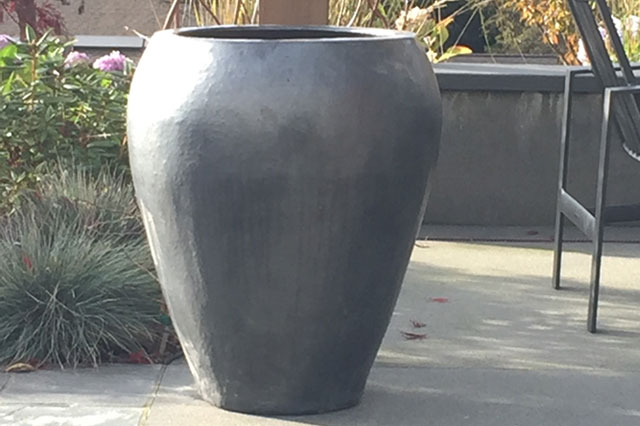
Tips for Choosing Your Next Garden Container
CONTAINED
BRILLIANCE
Ready to Purchase a Container?
March is a wonderful month to shop for outdoor containers. Retailers typically have received new arrivals, and offer a wide selection. Many run beginning-of-the-season sales to help them move product from previous seasons, making for some great value purchasing. Despite this, in March they aren’t crazy busy with spring madness quite yet.
Containers come in many shapes, colors, styles, sizes and materials. Don’t let that overwhelm you. Where you’ve ultimately decided to place your new container and whether the pot or the plants will be the focal point will help guide all the other decisions you need to make. When selecting what’s best for you, here are a few things to keep in mind.
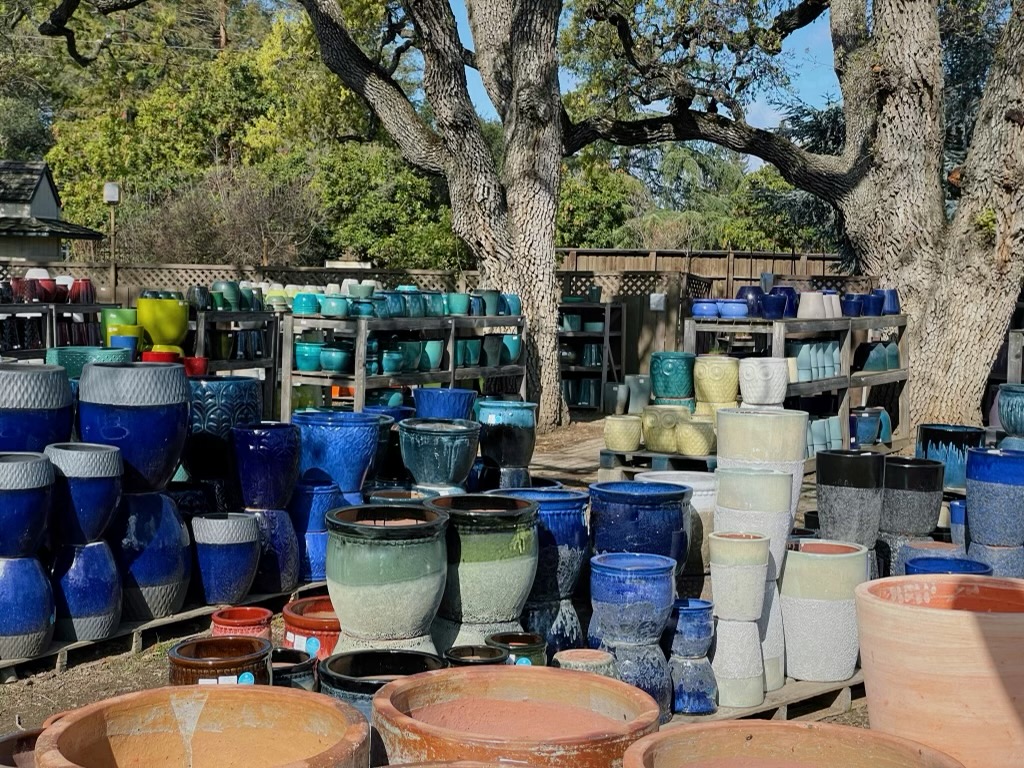
MATERIAL
There are many options when it comes to choosing the material of your container. Beyond aesthetics and longevity, you should consider whether the planter will be moved often, occasionally, or rarely, along with its location. If the pot will need frequent moving or is being placed on a rooftop deck it would be beneficial to choose a material that is lighter weight—for easier movement, as well as to avoid damage to your deck. Additionally, the material you choose will also affect how water moves within the pot, which will determine how often you’ll have to water and maintain your plantings.
Here’s a quick breakdown of some of the most popular materials and what to take into consideration as you begin shopping for pots.
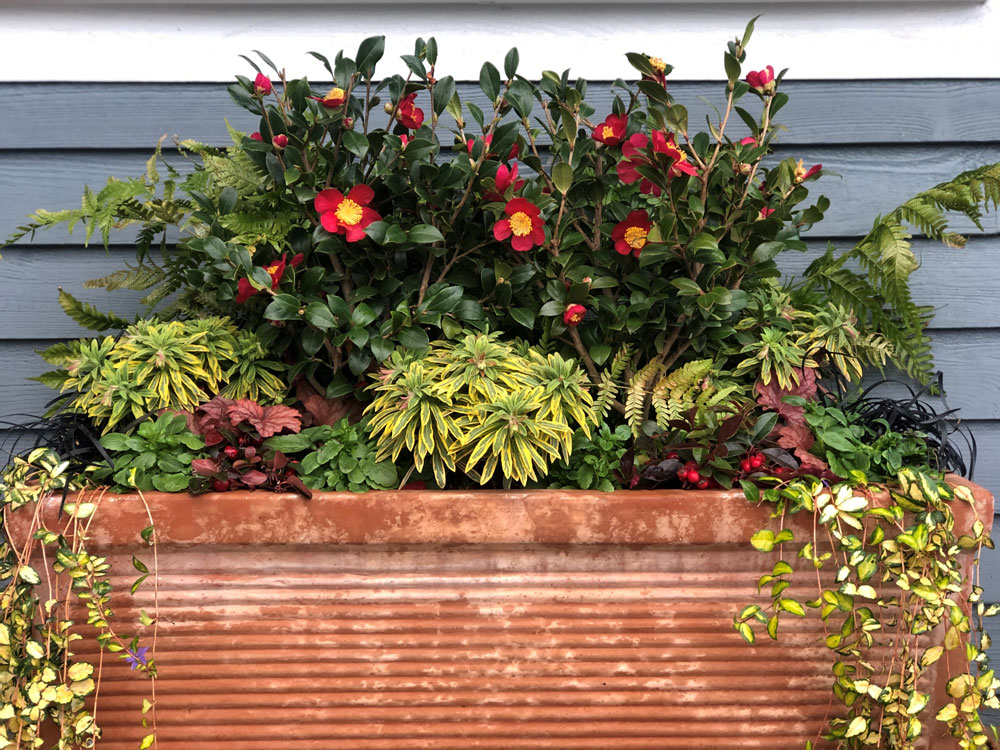
Terra Cotta/Clay
Color, quality, and cost are dependent on the type of clay and region of manufacture. Terra-cotta such as Galestro is fired at lower temperatures, and is more porous than those baked at higher temperatures. Higher quality terra-cotta such as Siena and Impruneta is fired at higher temperatures, and will better withstand the elements. Additionally, these pots are considered to be frost and freeze resistant—Siena less so than Impruneta. Clay is a porous material. Due to its porousness, it absorbs water and can actually take water away from plants. As a result, plantings in terra-cotta tend to dry out faster and need more watering. These pots are vulnerable to cracking in the cold winter months due to soil freeze-thaw cycles. Terra-cotta pots can also be prone to stains from soil and lime, and foster moss growth on their surfaces. Many like the charm of this weathered patina look.
$$-$$$$
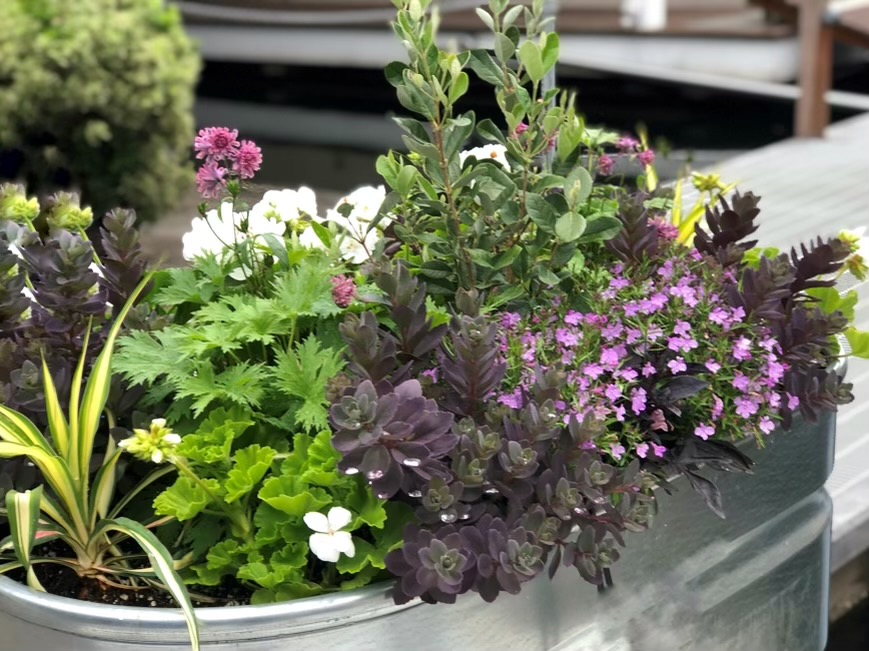
Metals
Metals are weather resistant and vary in weight depending on type. Cast iron, a heavy metal, can be a great choice if you are placing your container in a windy area as it gives a planting a solid base. Stainless steel, corten steel, and galvanized steel (zinc) are significantly lighter in weight. Be wary of temperature when choosing one of these options: they all absorb heat, causing the soil to dry out, with the potential of overheating plant’s roots, harming the plants or stunting proper growth. When it comes to cold environments, metal pots offer limited protective insulation. Here in the Pacific Northwest, they can be subject to rust due to the high-moisture environment. Rusting may leach to the ground, staining surfaces, but there are a number of wax products you can apply to help deter the rust from forming. Metal pots have a wide variety of appearances, from a vintage, repurposed style to a contemporary look.
$$-$$$
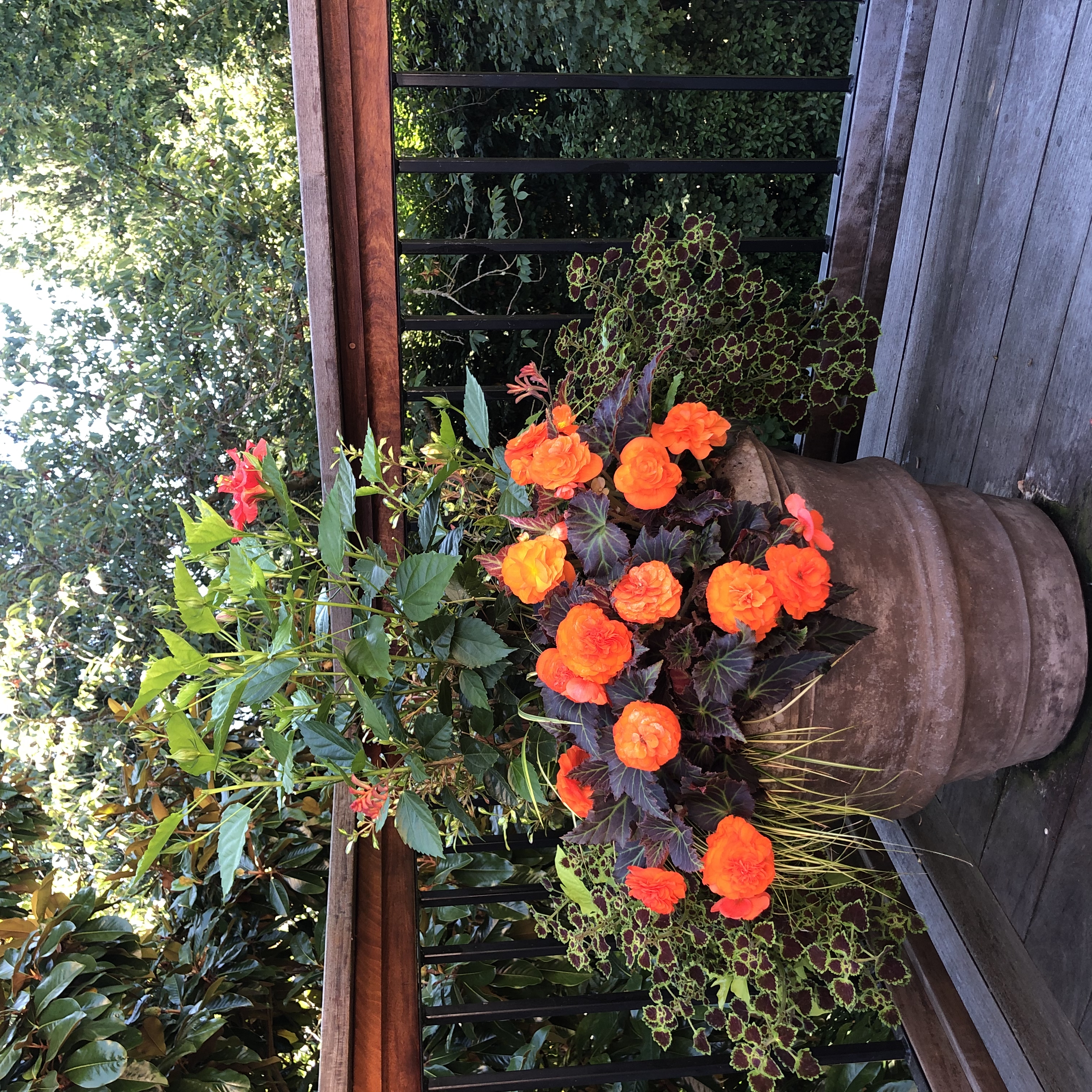
Cast Stone/Concrete
This material is extremely heavy and durable. However, this weight can make it prohibitive for rooftop and upper deck gardens. It can also make concrete challenging to move once placed, resulting in chipping when attempted. Similarly to terra-cotta, they can accumulate moisture and crack from soil freeze-thaw cycles. They can be pigmented, stained or patina for various artistic effects, and often appear quite elegant.
$$-$$$
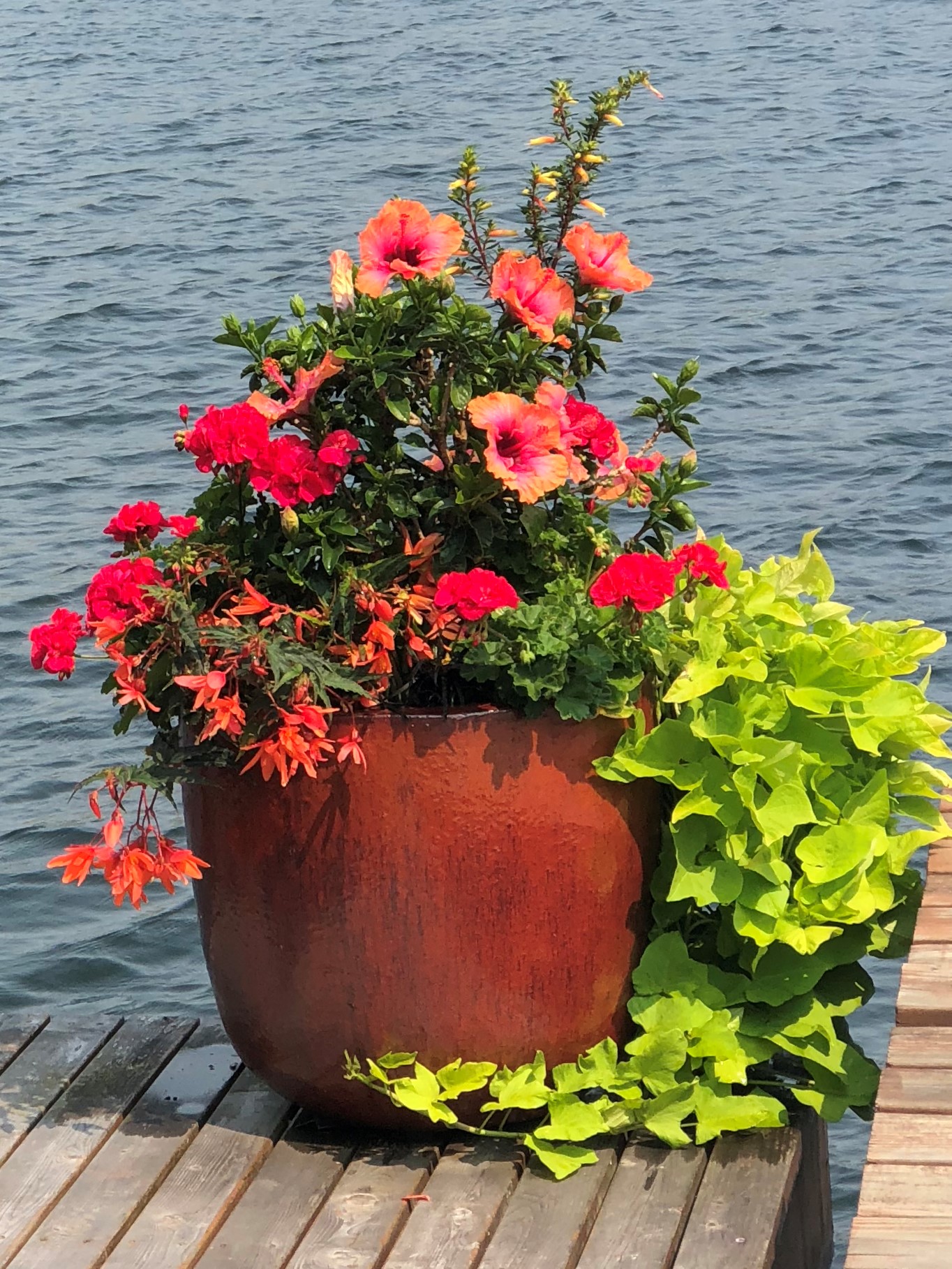
Ceramic Glazed Pottery
Clay pots that are ceramic glazed come in numerous shapes, colors and sizes. They are all-weather, frost resistant and have thick walls which help insulate plant’s roots more than many other materials. Each pot provides a unique glaze effect, and can make a wonderful statement much like a piece of artwork. Ceramic glazed pots are some of my favorites to utilize when appropriate. Their prices range widely depending on size, glazing and region of origin.
$$-$$$$
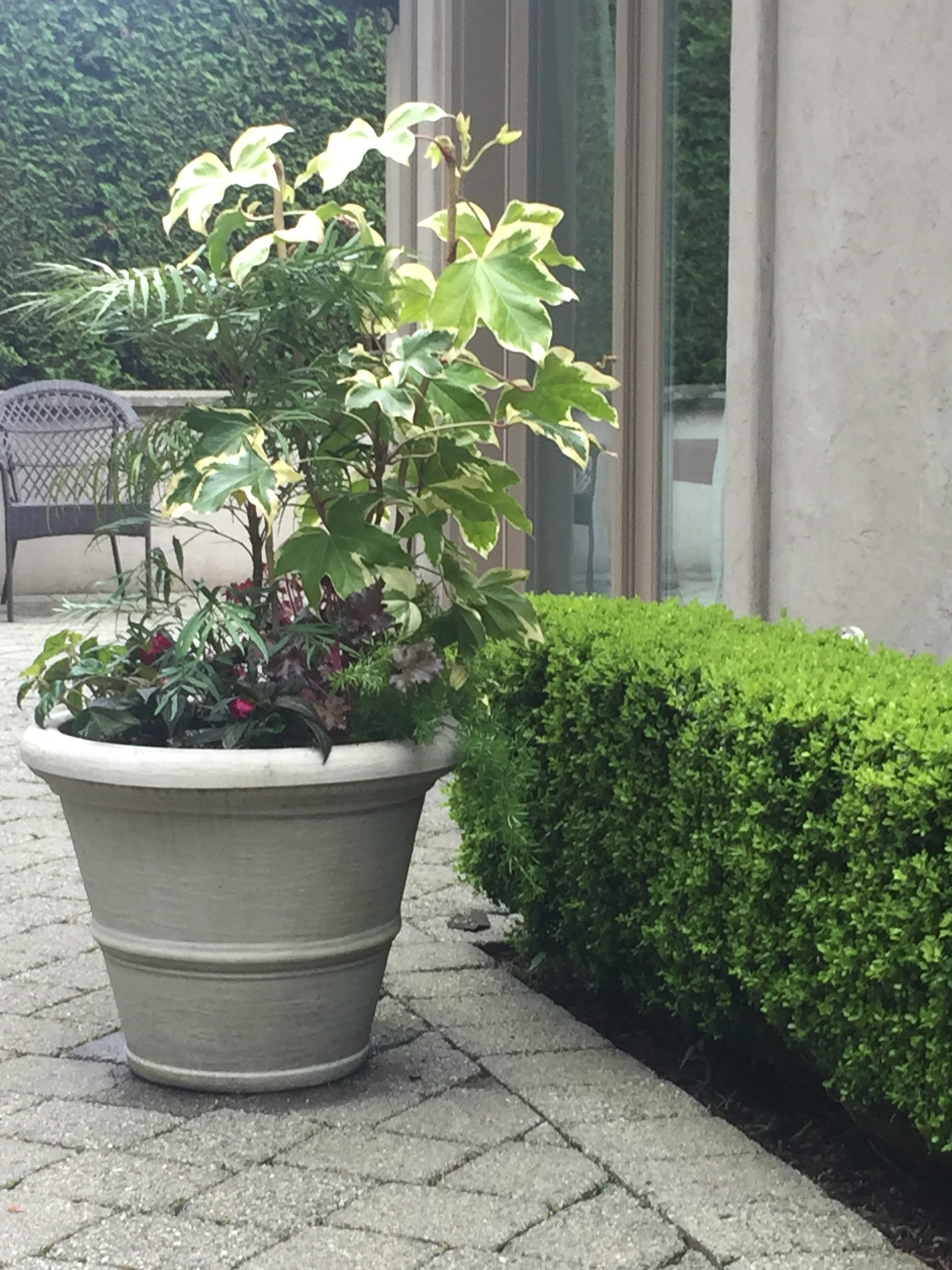
Plastic/Poly Plastic
There is a wide range of plastic pots available. They are generally inexpensive and lightweight, making them an easy, affordable option. High-grade resin plastics can mimic materials like stone, concrete, terra-cotta or cast iron. Lower-grade plastics can fade in color, crack and look cheap. Plastic doesn’t offer the same insulation for plant roots as ceramic glazed or concrete pots do, but are resistant to damage. Choosing this material often depends on your personal attitude about plastics: some want to consider an option that can be repurposed or recycled, in order to be conscious of the environmental impact.
$-$$$

Fiberglass
The light-weight nature of fiberglass makes it a nice option for rooftop, terrace or upper-deck plantings. It is tough, long-lasting and comes in lots of shapes, colors and sizes. They are all-weather and can tolerate seasonal soil freeze-thaw cycles. Fiberglass pots tend to lean more contemporary in style, built of clean lines and simple curves. Their lightweight nature can be a disadvantage in windy locations subject to tipping. They also have a propensity to scratch easily, something to be conscious of if you’re planning to place a container in a high-traffic area. They are priced similarly to metal, more expensive than concrete and less than high-end terra-cotta. $$$-$$$$
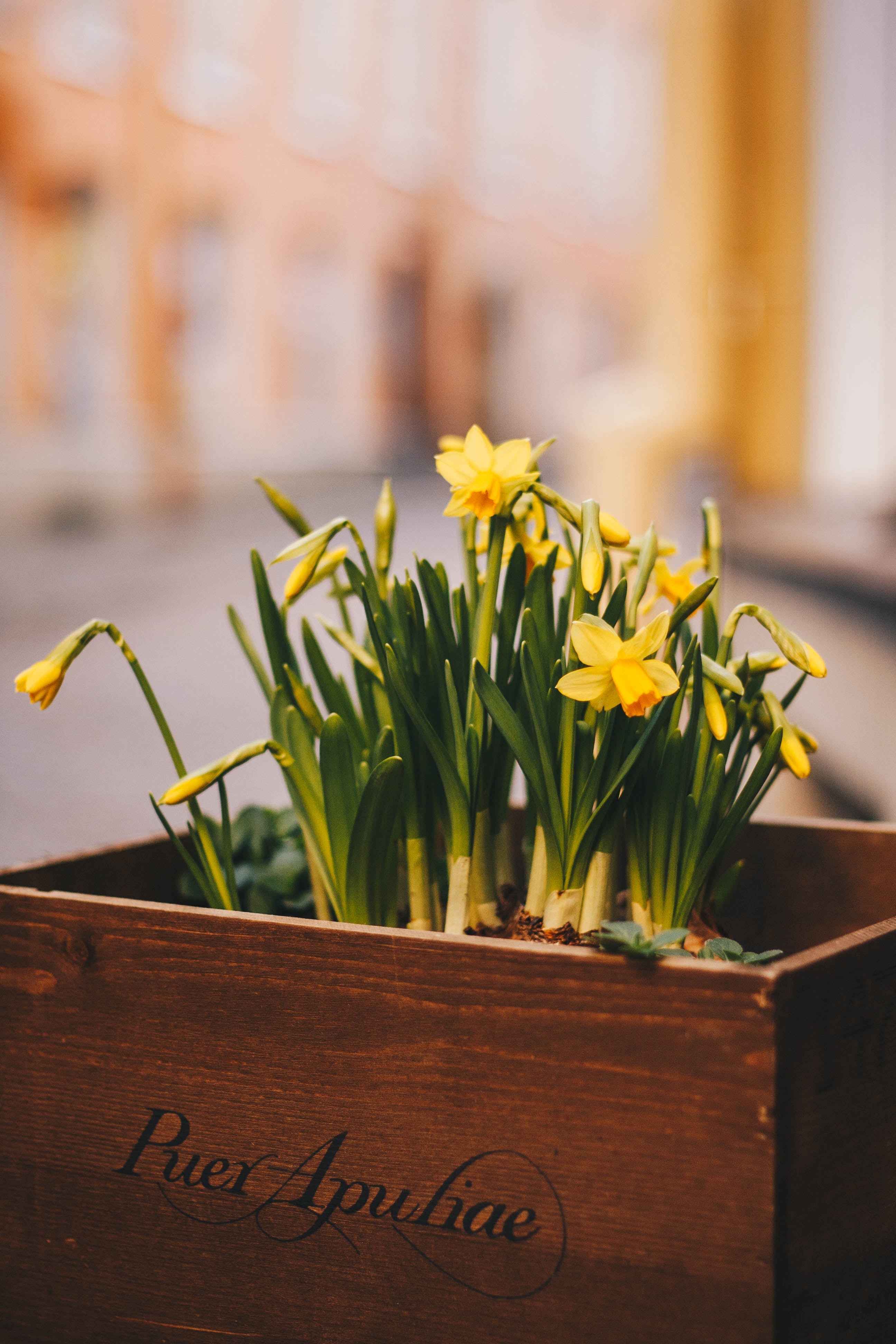
Wood
Wood gives a natural, beautiful look, and can have either a modern or traditional appearance depending on the wood and shape of the planter. It is medium in weight, and its durability will depend on the wood chosen, with cedar being both the most durable and most expensive wood. Wood planters take some maintenance; they need to be resealed for longer lifespans. When growing edible plants, be careful of treated wood: it holds the potential to release chemicals into the soil.
$-$$$
SIZE
After material, the next consideration should be size. When giving container advice, the phrase I say the most is “go bigger than you think”. Containers should be in scale with their surroundings—in most cases, this is your home. Large containers bring greater impact than small. They also are easier to maintain, as they require less watering and allow more room for the roots to grow. If able, mock-up the size of the container you are considering and test it out for scale. You can use cardboard boxes, chairs, buckets—anything lightweight that you can move around to visualize the scale for yourself. If one large pot feels too much for you, you can group pots together to increase the visual scale. However, try to think along the lines of tiered groups to fill the space rather than pots of the same size. Too many small pots together, especially in an entryway, can feel cluttered and create a less welcoming environment.

COLOR
Select from a color palate that is reflective of your home, tying in with accent colors from your home’s exterior elements such as trim, stonework, doors, fixtures or roof color. If you can view the potential containers from inside the home, consider choosing a color that ties in with an accent color from the interior of your home, connecting the indoors and outdoors together. Think about whether you want something understated, which might be more apt to stand the test of time, or a bold statement with a pop of color. How does the color make those that use the space feel? Bold colors draw attention and focus. Earth toned colors tend to feel homey, while white and pastels tend to feel more minimalistic. Gray can be a neutral, calm color. Flat black is a safe, sophisticated choice—it can often add nice contrast to a light-colored background, and tie in with outdoor fixtures such as light fixtures and door casings. Black also emphasizes the plantings and colors surrounding it. Cobalt blue pots are a popular choice, providing color yet tying into natural elements such as the sky and water. Ultimately, the choice is yours—pick the color that makes you happy, and achieves your desired effect.
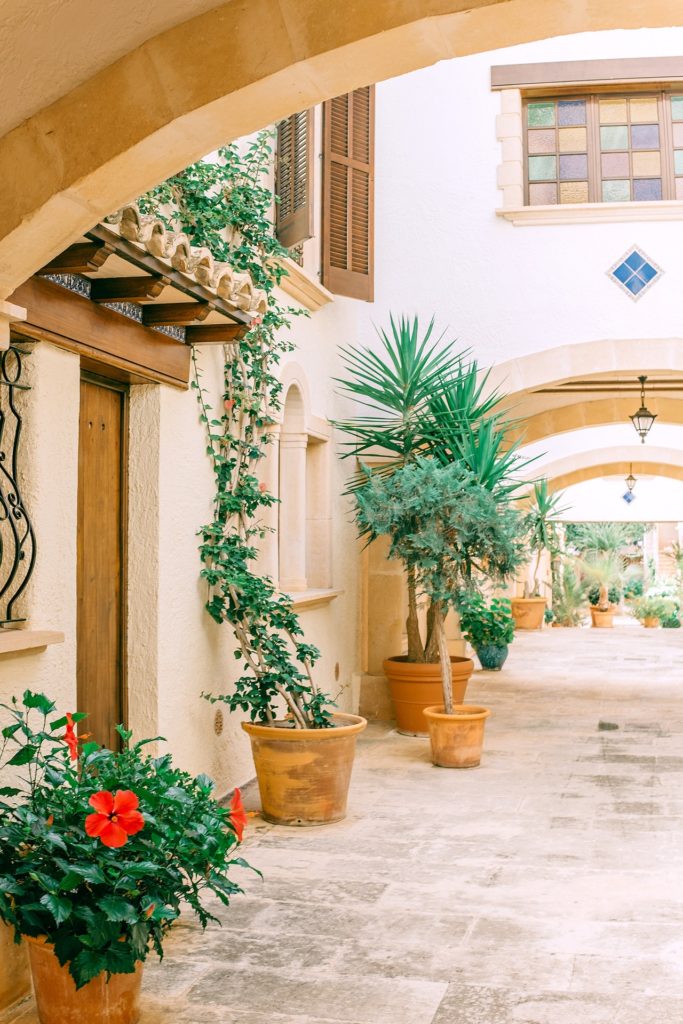
STYLE
Think about the style of your home, as you’ll want the containers to compliment it. Contemporary shaped planters with straight clean lines and made from metal, fiberglass or glazed ceramic go well with modern and mid-century homes. Classic shaped pots that are equal in width and height with a slight “V” shape to them, and formal planters such as urns, blend well with a traditional home. Rustic pots are natural and organic, lending them to marry with a broad range of home styles: from Tuscan, to coastal, cottage to lodge-like. Mediterranean speaks to a more relaxed style, and can typically be found in materials such as terra-cotta or blue glazed ceramic. The shape of a planter also will determine its stability. Square and cylinder pots offer the most stability. Inverted cones with smaller base-to-height ratios tend to be more wobbly.
DRAINAGE
ALWAYS choose a pot with drainage holes. If you absolutely fall in love with a pot that doesn’t have drainage holes, drill the drainage holes yourself. You’ll also want to slightly raise the pot off of the ground in order to ensure further drainage. There’s a simple mechanism for this called “pot feet”, which can range from something as ornamental as ceramic feet to lift the pot, to something as simple as rubber risers.
Adding containers to your outdoor living areas can be an inexpensive way to make your space more inviting, bring in beauty, color, charm, and occasionally even privacy by screening unwanted views. I love helping our clients and friends determine the best size, scale, style and placement of their containers. Please don’t hesitate to give me a shout if you have any questions—I’m always happy to help or give you some recommendations. Happy Spring!

Resources:
"Dennis Smith's "Commercial Containers: Selection Considerations and Material Options" Course at Campania International
Choosing the Right Colors for Planters, Jay Scotts, 11/05/2020
7 Materials Used for Containers, Kerry Michaels 3/4/2021


